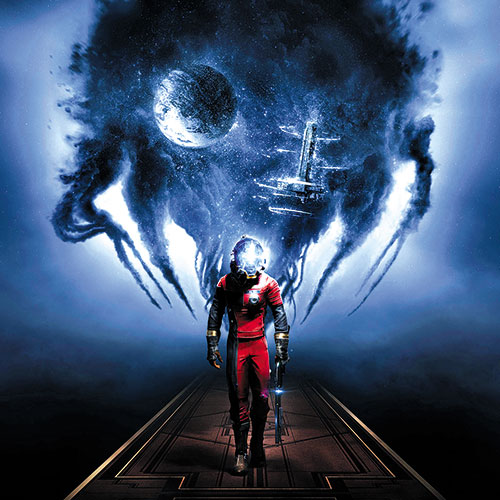Flaws Aside, ‘Prey’ a complicated game worth learning

By Javy Gwaltney | Game Informer Magazine
“Prey”
Platform: PS4, Xbox One, PC
Style: 1-Player Action
Developer: Arkane Studios
ESRB: M, for Mature
Prey begins slowly, in appropriately sedated fashion, as scientist Morgan Yu awakens in an upper-class apartment. There’s a sense of fuzziness there, an inexplicable unease that something is not right. Turns out the feeling isn’t misplaced. After a trippy introduction, Prey thrusts you headfirst into its world, where merciless monsters called Typhon roam the research-focused Talos-1 space station, tearing the inhabitants to pieces. Suddenly you find yourself in the position of having to keep these aliens from getting off the station — at any cost.
Prey is concerned with who Morgan Yu is, and the game lets you choose nearly every facet of their person, including gender, skills, and even morality. The best parts of Prey often stem from how Yu interacts with other people. Is he or she sympathetic toward coworkers? Would Yu risk life and limb for them? What about humanity? And how does our scientist interact with brother Alex Yu, the man in charge of these experiments? Prey lets us decide the answers to these questions just as much as it lets us determine how Yu confronts the Typhon monsters running around Talos-1.
Talos-1 is a massive place: not just structurally, but also emotionally and politically. Crewmembers, both living and dead, are well-realized with personalities that make them more than just fodder. They have full names; they fight, they bicker, they have office romances—they even play Dungeons and Dragons! What could otherwise be a generic horror setting feels real thanks to clever writing and solid voice-acting, and it helps drive home what’s at stake for Yu and company.
The Typhon are a terrifying foe to go up against. Even the weakest enemies, mimics, are frightening because they can camouflage themselves as ordinary objects in the environment. See a health pack conspicuously on the floor in the middle of a boardroom? Better smack it with a wrench first to make sure it’s not a beast in hiding. The enemies become more unnerving as Prey goes on, introducing shadowalkers capable of setting you on fire and massive, floating Typhon that can shut down your equipment and make heads literally explode.
In spite of how interesting the set-up and enemies are, the early hours of gameplay are sluggish. Morgan is not a super-powered human (yet) but instead a scientist that these bullet-sponge monsters can kill in a few hits. Until you start upgrading your stats by modding your body with neuromods — Prey’s equivalent of level currency—your best bet is to stick to the shadows, collecting supplies and audio recorders, lest you want to get torn to shreds. For these two hours, I found the combat to be dull and that the upgrades, which bestow typical strength and health buffs, were bland.
However, about a third of the way through Prey, you unlock the ability to spend your neuromods to acquire Typhon powers. The abilities run the gamut from telekinesis blasts that will fling enemies across the room to the power to turn yourself into a mundane object in the environment, like a coffee mug, to hide from enemies or access hard to reach places. From these abilities emerge Prey’s interesting take on the Play Your Way formula. Not only are the powers fun to experiment with in and out of combat, but there are also interesting narrative consequences to using them.
Prey’s impressive narrative execution makes its shortcomings easier to bear, but it doesn’t erase them. While the combat did improve substantially once I was able to use Typhon powers and gain cool weaponry (like a grenade that creates a small Black Hole), I never escaped the feeling that I was chipping off squares off a health meter when I went up against foes. There’s also a lot of backtracking, especially if you do side missions, and while those occasions aren’t too annoying in themselves, they do hammer home that the space station isn’t as visually diverse as it could be.
Despite being rough around the edges, Prey still managed to consistently impress and even occasionally hit me with a sense of wonder. Sections that had me floating around the exterior of the Talos-1 in zero-G were tense, as I explored massive hull breaches for supplies like a treasure hunter, and I loved experimenting with the Gloo Gun, using it not only to immobilize enemies but also to plug up holes spewing fire and to build bridges across chasms.
In Morgan Yu, Prey invites us to create a fascinating and complicated protagonist navigating a dangerous world filled with characters worth knowing. Arkane’s fusion of player-driven storytelling and flexible gameplay remains strong throughout its first sci-fi outing, and makes Prey a stellar horror adventure despite a handful of flaws.











